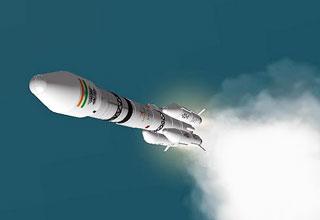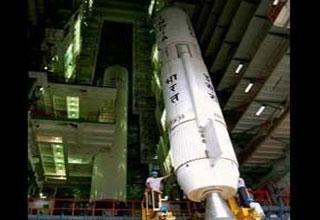
A file photo
BANGALORE (PTI): India's top space scientists are analysing data to find out what caused the failure of Geosynchronous Satellite Launch Vehicle (GSLV) mission and an expert committee is likely to be formed soon to give a report on it.
"Teams are looking at the data to find out the reason for what happened," Indian Space Research Organisation (ISRO) spokesman S Satish told PTI here.
"A Failure Analysis Committee is likely to be constituted in the next one or two days," he said.
In a major setback, GSLV-F06 powered by Russian Cryogenic stage, with GSAT-5P communication satellite on board, failed in its mission on Saturday following a technical problem soon after the liftoff from the Sriharikota spaceport in Andhra Pradesh.
The GSAT-5P, meant to give a boost to communication services, including TV, telephone and telemedicine, was originally scheduled for launch on December 20 but was postponed a day earlier after a leak was noticed in the cryogenic stage during pre-countdown checks.
This is the second consecutive setback for India's space programme this year after the GSLV-D3 veered off its flight path and plunged into the Bay of Bengal along with GSAT-4 on April 15.
After the failure on Saturday, top ISRO officials said the command to control the space rocket (GSLV-F06), carrying GSAT-5P, from the equipment bay, the electronic brain of the launch vehicle resident atop it, did not reach the actuators in the first stage.
They suspected that a connector chord, which takes the signal down, had snapped.
The FAC to be formed is expected to be similar to the committee set up after the failure of GSLV-D3, primarily for the flight testing of indigenously developed Cryogenic Upper Stage (CUS), on April 15 this year.
The FAC comprising multi-disciplinary experts concluded at the time that the primary cause for the failure was the sudden loss of thrust in one out of the four liquid propellant strap-on stages (S4) immediately after lift-off at 0.2 sec.
With only three strap-on stages working, there was significant reduction in the control capability.
However, the vehicle altitude could be controlled till about 50 seconds. At the same time, the vehicle reached the transonic regime of flight and the vehicle altitude errors built up to large values, resulting in aerodynamic loads exceeding the design limits thus leading to break up of the vehicle.
 Previous Article
Previous Article Next Article
Next Article













The Indian Air Force, in its flight trials evaluation report submitted before the Defence Ministry l..
view articleAn insight into the Medium Multi-Role Combat Aircraft competition...
view articleSky enthusiasts can now spot the International Space Station (ISS) commanded by Indian-American astr..
view article